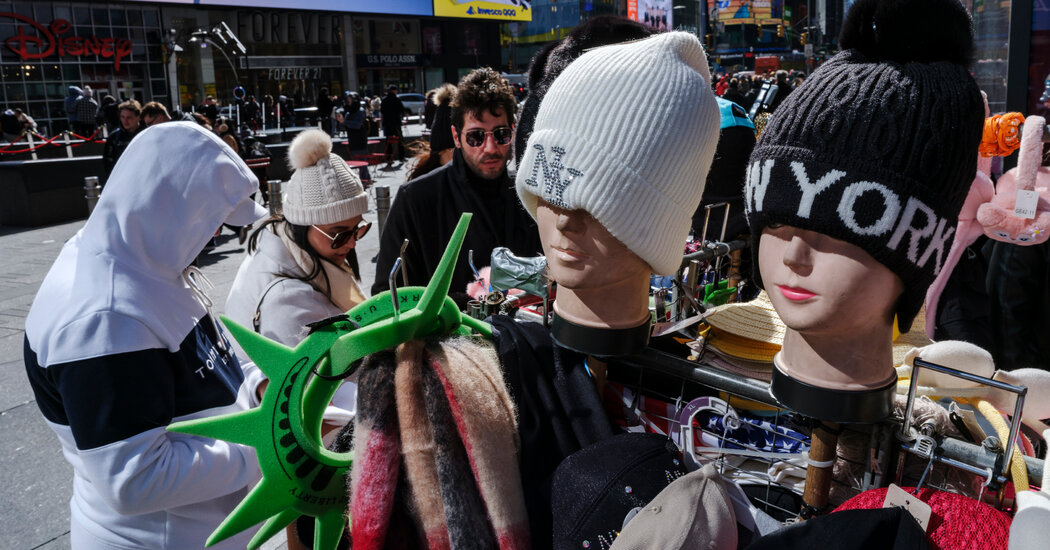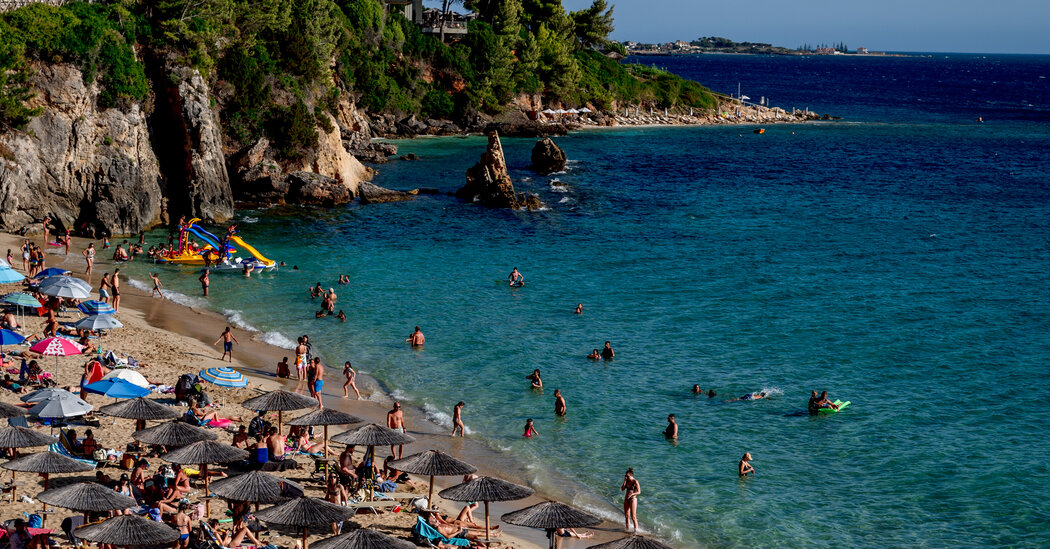New York City is expected to welcome 400,000 fewer tourists this year than it did in 2024, a decline primarily driven by negative sentiment toward the United States among foreign travelers who have reconsidered their vacations.
The city’s tourism agency, New York City Tourism and Conventions, had entered 2025 with optimism after the coronavirus pandemic disrupted travel five years ago and had projected a full recovery this year with a record number of visitors.
But the agency has now twice revised downward its initial forecast of 67.6 million visitors — international and domestic — since President Trump declared a trade war on allies, mused about annexing other countries and ramped up an immigration crackdown that has resulted in the detentions of several foreign tourists.
The latest forecast, which will be released on Thursday, now estimates that 64.1 million tourists will visit the city. That includes 400,000 more domestic travelers than last year, but 800,000 fewer foreign travelers.
The new forecast sees 12.1 million international travelers, a 17 percent drop from earlier 2025 projections. The decline has been led by a drop-off in tourists from Canada, who have boycotted trips to the United States over Mr. Trump’s threat of making their country the 51st U.S. state.
International travel to the United States from other parts of the world has largely held up so far, but New York City relies on Canadian tourists. Travel analysts fear that continued economic uncertainty could scramble travel plans from the rest of the world.
While many more domestic travelers visit New York City than international ones, overseas visitors tend to stay longer and spend more. Last year, tourists spent $51 billion in New York City — with about half by foreign travelers. Spending this year is now forecast to decline by $4 billion.
Julie Coker, the head of New York City Tourism and Conventions, said that her agency was marketing the city in foreign countries under a campaign titled “With Love + Liberty, New York City.”
The agency, a nonprofit that is partially funded by the city, wants travelers to know, she said, “that New York City is still the most welcoming, inclusive and diverse city in the world.”
Tourism is a vital pillar of New York City’s economy. The industry helps sustain numerous sectors — including Broadway, museums and restaurants — and employs more than 260,000 people.
So far this year, about 117,000 fewer foreign passengers have arrived at Kennedy International Airport and Newark Liberty International Airport compared with the same period in 2024, according to an analysis of passenger entry data by The New York Times.
Hotel occupancy rates in New York City have stayed relatively flat this year, but bookings for the upcoming summer months, a peak travel season in the city, have not kept pace with last year, according to CoStar, a real estate analytics company.
John Fitzpatrick, who owns two hotels in Manhattan, said he had felt extremely positive about tourism in the city at the end of 2024, with bookings at his properties having the strongest few months since the pandemic.
But now, he said, bookings are down about 5 percent from last year. His hotels missed their April forecast, bookings for May are below projections and reservations in the upcoming months are not as robust as expected.
“Just as we get back up on our feet, we get kicked down again,” Mr. Fitzpatrick said. “It’s worrying.”
In conversations with Europeans during recent trips to Ireland, where he also owns a hotel, Mr. Fitzpatrick said he had heard that they are not just upset about the tariffs but are also afraid that they could be detained by the immigration authorities in the United States.
The talk had been of the more aggressive tactics by U.S. border authorities at ports of entry, including the detention of two German tourists for four weeks, he said.
“You want to go where you feel welcome,” Mr. Fitzpatrick said.
Some tourist spots in New York City have started to report a decrease in customers. The Empire State Building Observatory’s operator said it saw a 4.6 percent decline in people in the first three months of the year compared with last year, adjusting for the shift in the Easter holiday this year. About 50 percent of its visitors are from overseas.
TopView Sightseeing, which operates a fleet of double-decker buses in Manhattan, has seen a 20 to 25 percent decline in customers. The company’s owner, Asen Kostadinov, said the drop off started about a year ago and has worsened in 2025, with a noticeable decline in foreign travelers.
Mr. Kostadinov said that travelers appear to be more budget conscious, increasingly booking lower-cost packages with his company. He has also seen an uptick in business at his bike rental company near Central Park and his Statue of Liberty cruise tours, both of which charge less than the bus trips. In comparison, business at his sightseeing bus company in London has increased this year, he said.
As a result of slower business in New York City and the economic uncertainty, Mr. Kostadinov said he has let go some corporate employees, cut bus drivers and postponed planned investments, including a new bus depot.
“There is no question that the tariffs are causing some sort of anti-American sentiment,” Mr. Kostadinov said. “I am an immigrant and I love America, but at the end of the day, we don’t want to make enemies for no reason.”





